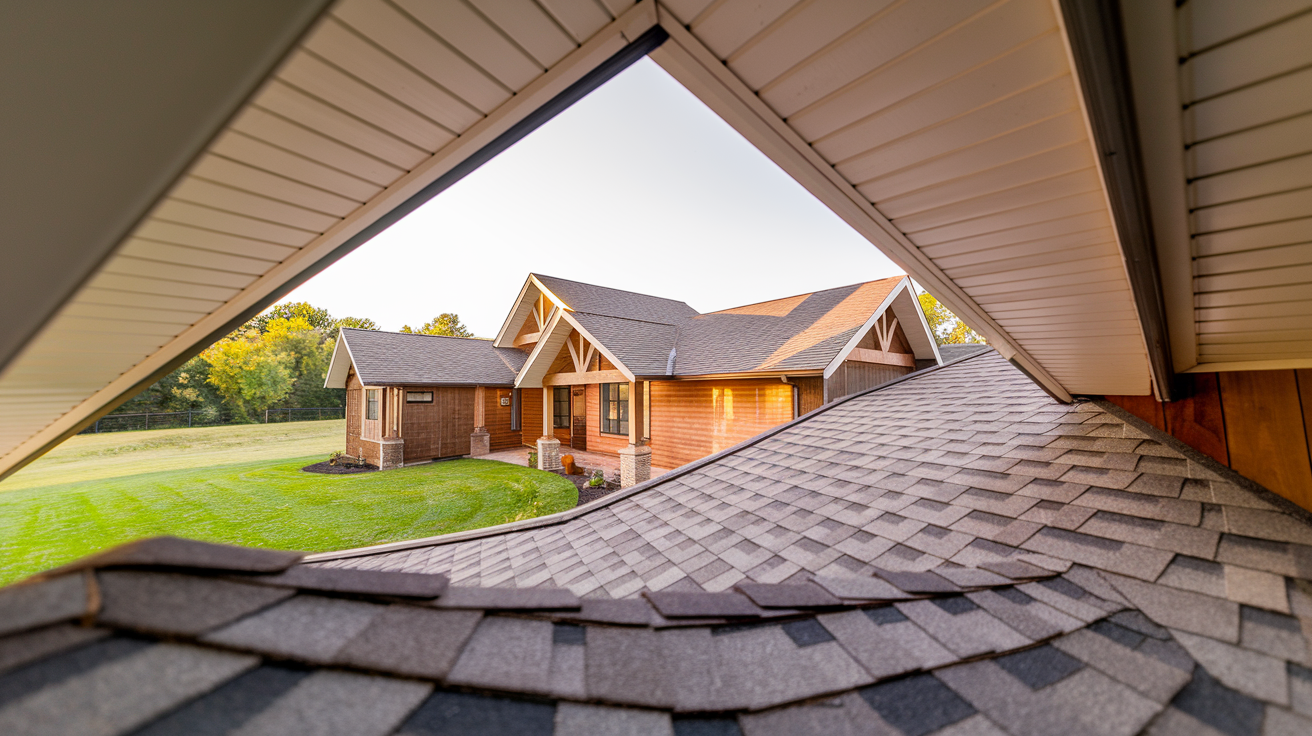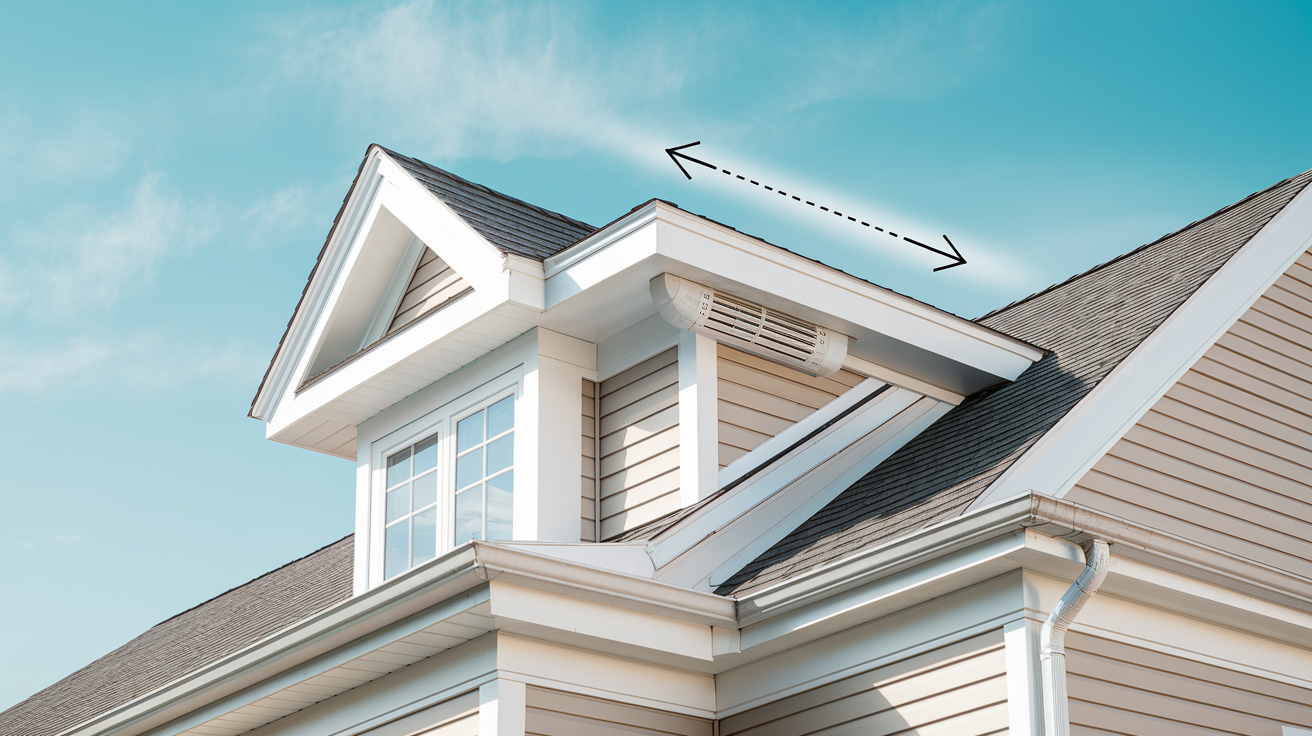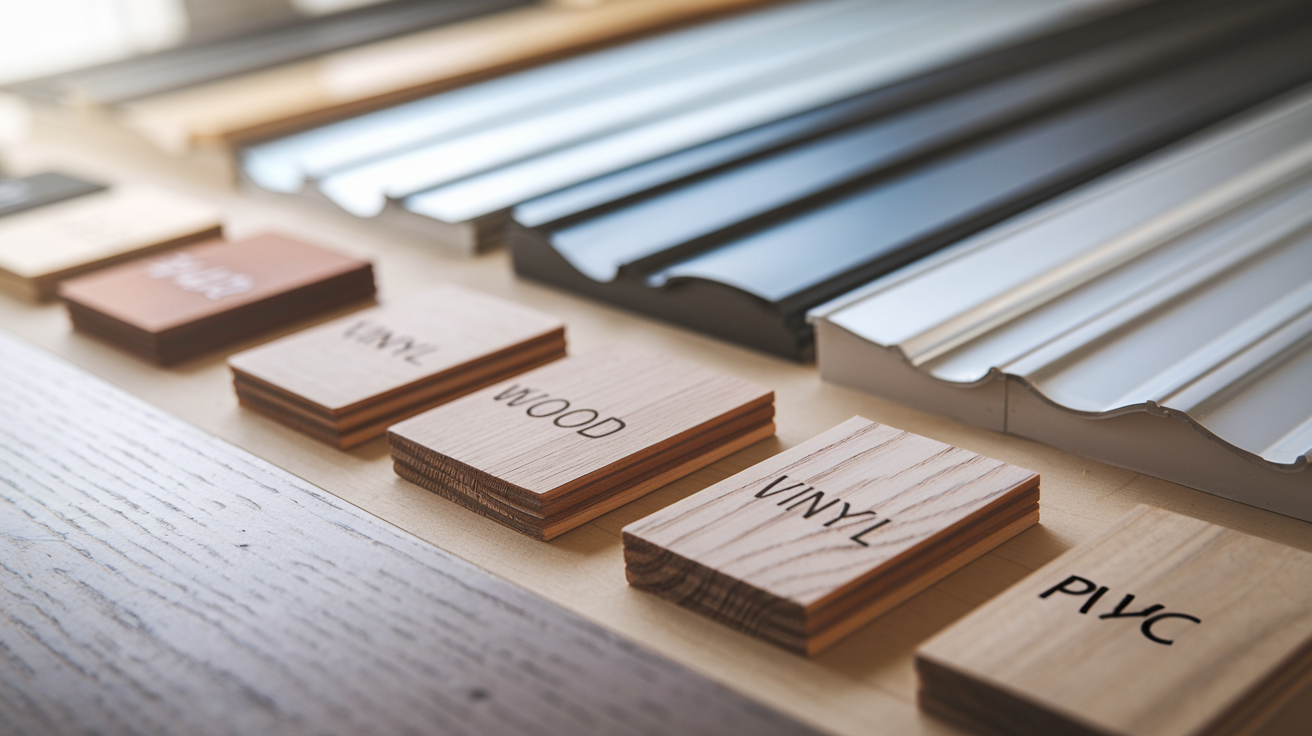Ultimate Guide: How Fascia & Soffit Protect Your Roof & Save Money
Every year, homeowners spend thousands of dollars repairing water damage, mold growth, and pest infestations that could have been prevented with properly maintained fascia and soffit. These often-overlooked components of your roofing system play a crucial role in protecting your home from moisture damage and maintaining proper attic ventilation. Studies show that up to 70% of homes have inadequate ventilation, leading to increased energy costs and potential structural damage.
Your home's fascia and soffit do more than just improve curb appeal. These essential elements work together to create a defensive barrier against weather, support your gutter system, and provide crucial airflow that helps regulate attic temperature and moisture levels. Without proper maintenance, damaged fascia and soffit can lead to serious issues like ice dams, rotting roof decking, and even complete gutter system failure.
In this comprehensive guide, you'll learn how fascia and soffit protect your home, common problems to watch for, and practical maintenance tips to extend their lifespan. Whether you're a new homeowner or planning renovations, understanding these vital components will help you make informed decisions about your roof's health and potentially save thousands in future repairs.
- Introduction to Fascia and Soffit
- The Role of Fascia in Roof Protection
- The Function of Soffit in Roof Ventilation
- Common Problems and Solutions
- Installation and Maintenance
- Conclusion
Introduction to Fascia and Soffit
Definition and Overview
Fascia and soffit are essential components of a roofing system, offering both functionality and aesthetic improvement to your home. The fascia is the vertical board at the roof's edge, connecting to the rafters and usually supporting the gutters. It acts as trim that conceals rafter ends and supports the bottom row of shingles. As it holds the gutters, the fascia bears their weight and ensures proper functionality. The soffit, located under the eaves, is the horizontal part of the roof overhang visible from the ground. It provides attic ventilation and protects rafters from weather. Together, fascia and soffit shield your roof from weather, pests, and debris, keeping pests like birds, squirrels, bats, and insects at bay. Damaged fascia can allow these pests into your attic and other parts of your house, potentially causing nests and insulation damage.

Importance in Roofing Systems
Fascia and soffit are crucial for your home's structure beyond mere protection. Fascia boards support gutters, which direct rainwater away from the roof and foundation, preventing water damage and erosion. A compromised fascia can cause gutters to sag, overflow, or collapse, especially under snow and ice weight, leading to costly repairs. Soffits ventilate the attic, controlling temperature and moisture, which prevents mold and wood rot. The space between the fascia and roofline facilitates air circulation, preventing heat and moisture buildup that could damage the roof and pose health risks. Good attic ventilation saves energy, reducing heating and cooling bills. Many homes lack sufficient ventilation, with studies suggesting up to 70% of homes may face this issue. A recommended rule is one square foot of ventilation per 300 square feet of attic space, achievable with soffit vents for intake and ridge or hip vents for exhaust. Builders favor soffit vents for their efficiency and cost-effectiveness. Get Your Roof Assessment to ensure your roofing system functions optimally and protects your home. Regular checks for clogged or cracked gutters are essential, as these issues can affect fascia and soffit performance and lead to pest problems. Learn more about roof maintenance to keep your roof in excellent condition.
The Role of Fascia in Roof Protection
Structural Support and Aesthetic Appeal
Fascia boards play a vital role in protecting your roof and enhancing your home's curb appeal. They act as a barrier against the elements, support your gutter system, and provide a clean, finished look to your roofline. Understanding their function is key to proper home maintenance.
Protection Against Weather Elements
Fascia boards are your roof's first line of defense against weather, acting as a barrier against rain, snow, and wind, preventing moisture from entering the roof space. This protection helps prevent rot, mold, and other moisture-related damage that can compromise your roof's structure and lead to costly repairs, especially in humid climates or areas with frequent rainfall. Additionally, fascia boards help keep pests out by sealing the roof space, deterring birds and insects from nesting inside. Decaying fascia can create entry points for pests, potentially leading to infestations in your attic or home. For instance, damaged fascia can attract carpenter ants or termites. Learn more about roof maintenance to prevent these issues.
The Function of Soffit in Roof Ventilation
Soffit plays a vital role in roof ventilation, serving as the primary entry point for fresh air into the attic. Located beneath the roof overhang, soffit allows cool air to enter the attic, crucial for a balanced ventilation system. This intake helps regulate attic temperature and prevents excess heat buildup, which can lead to higher energy costs and premature roof deterioration. Well-designed soffit vents ensure effective airflow and support the roofing system's health. Industry data suggests inadequate ventilation is a common issue, potentially affecting up to 70% of homes. Soffit vents work with exhaust vents to create this balanced system. Consider a roof assessment to determine the effectiveness of your current ventilation system.

Ventilation and Airflow Benefits
Effective soffit ventilation significantly improves airflow within the attic. By allowing cool air in, soffits facilitate air movement that expels warm, moist air through exhaust vents like ridge vents or gable vents. This exchange maintains a consistent attic temperature, reducing ice dam risk in colder climates. Ice dams form when melting snow refreezes at the roof's edge, potentially causing water damage. Proper ventilation also eases the strain on HVAC systems, particularly in hot weather. Additionally, improved airflow minimizes mold and mildew growth, protecting both the roof's structure and occupants' health. Proper ventilation removes excess moisture, a key contributor to mold and mildew. Learn more about roof maintenance, including ventilation, by visiting our comprehensive guide.
Prevention of Moisture Buildup
Soffit ventilation primarily prevents moisture buildup in the attic. Without it, moisture from daily activities like cooking and bathing gets trapped, leading to condensation. This trapped moisture raises attic humidity, creating an environment ripe for problems. Moisture can cause wood rot, weaken structural components like rafters and beams, and encourage mold growth, necessitating costly repairs and posing health risks. Adequate soffit ventilation, generally one square foot of ventilation per 300 square feet of attic space, protects homes from moisture damage, extending roof lifespan and preserving indoor air quality. Never cover attic soffit vents with insulation; use rafter vents and soffit vents together to maintain airflow. Blocking soffit vents disrupts airflow and worsens moisture problems.
Common Problems and Solutions
This section explores common issues that can affect your soffit and fascia, along with effective solutions to maintain their functionality and protect your home. From rot and moisture damage to pest infestations, understanding these problems and their solutions is key to preserving your home's exterior.
Rot and Moisture Damage
Rot and moisture damage pose significant threats to the lifespan of your soffit and fascia. The space between the fascia boards and the roofline is crucial for air circulation. This airflow prevents moisture buildup, which can lead to mold, mildew, and ultimately, wood rot. Regular inspections are essential to catch these problems early. Keeping gutters clean prevents water overflow, which can damage the fascia and contribute to rot. Damaged or weak fascia can cause gutters to sag, overflow, or even collapse under the weight of snow and ice. Clogged or cracked gutters further exacerbate these issues, impacting the performance of both soffit and fascia. Consider rot-resistant materials like vinyl or aluminum for longer-lasting protection. Minor repairs for small sections of damage can cost between $800 and $1,500, while a full soffit and fascia replacement along the entire roofline can start from $2,500 and increase depending on the size of your home and chosen materials. For a comprehensive roof analysis, consider our Get Your Roof Assessment.
Pest Infestations and Prevention
Decaying soffit and fascia provide easy access for pests to enter your home. Birds, insects, and small animals like squirrels can exploit weakened areas to create nests or seek food. Decaying fascia boards create vulnerabilities that allow pests access to your attic and potentially other areas within your home. Once inside, pests can cause significant damage by chewing on wires, nesting in insulation, and contaminating living spaces. Maintaining the structural integrity of your soffit and fascia and promptly addressing any decay or gaps is crucial for preventing infestations. Soffit and fascia act as barriers, protecting your roof space and attic from the outside world. Installing mesh or netting can further deter pests while still allowing for proper ventilation. Regularly check these barriers for damage, especially after storms. You can learn more about roof maintenance to understand how to protect your home from pests and other potential problems.
Ventilation Issues and Ice Damming
Proper ventilation is key to preventing issues like ice damming, which occurs when ice forms at the roof's edge, preventing melting snow from draining. This can lead to water damage inside your home. Balanced ventilation is crucial. Soffit vents allow cool air to enter the attic, regulating temperature and reducing moisture buildup. The soffit, situated beneath the roof overhang, plays a vital role in this ventilation process. Ensure these vents are clear and functioning correctly. Soffit vents are often the most cost-effective intake vent option because they provide excellent ventilation for the price. If you notice ice damming, indicated by icicles along the roof edge, consider adding attic insulation and ensuring proper ventilation to balance indoor and outdoor temperatures. A balanced airflow, facilitated by both soffit and fascia vents, helps regulate attic temperature and humidity. Up to 70% of homes may not have adequate ventilation, emphasizing the importance of proper soffit and fascia function.
Installation and Maintenance
Understanding fascia and soffit installation and maintenance is crucial for a long-lasting and effective roof. These parts protect your home from weather and ensure proper ventilation. Correct installation and regular maintenance can prevent expensive repairs down the road.
Material Choices and Cost Implications
Picking the right fascia and soffit materials affects both cost and how well they work. Common materials include wood, aluminum, vinyl, and PVC. Each has pros and cons regarding price. For example, PVC is durable and low-maintenance, making it a popular choice. This durability means less money and time spent on upkeep. Industry data suggests installation or replacement costs between $9 and $34 per linear foot, totaling between $900 and $6,800 for an average-sized project, depending on the material. Balance your budget and your home's needs when choosing materials. For instance, vinyl is a good option for humid areas because it resists moisture. Thin vinyl soffit, similar to vinyl siding, is a common choice. Fascia installation is typically more complex than soffit installation, resulting in higher labor costs. Soffit installation generally costs $1.50 to $4 per linear foot, while fascia installation runs from $6 to $20 per linear foot. Considering a roof assessment can help you make informed decisions about your soffit and fascia. Get Your Roof Assessment

Common Maintenance Practices
Regular maintenance is key to preventing damage and extending the life of your fascia and soffit. This includes checking for cracks, rot, or pests. Look for signs of decay in wood fascia, peeling paint, or warping in vinyl. Regular cleaning is also important to prevent debris buildup, which can cause water damage and mold. Debris like leaves and twigs can block ventilation and trap moisture. Small repairs, like replacing damaged sections or resealing joints, can prevent bigger, more costly problems. Minor repairs, such as a few cracks or damaged boards, might involve caulking or replacing a few boards, costing between $800 and $1,500. More extensive damage requiring full soffit and fascia replacement along the entire roofline could cost between $2,500 and $6,000. Regular maintenance helps catch and fix issues early, keeping your soffit and fascia in top shape. Learn more about roof maintenance
Regional Variations in Installation Techniques
Fascia and soffit installation methods can differ based on local weather and building codes. High-wind areas, for example, might require extra reinforcement to secure soffit panels. In these areas, if the unsupported span of a soffit panel is more than 12 inches, extra supports are needed for stability. Some regions require specific materials or building methods to meet local standards. For areas with heavy snow, materials and installation must be able to handle the extra weight. Always check with local building code officials. Working with local experts familiar with regional requirements will ensure the best installation practices for your home.
Conclusion
Recap of Fascia and Soffit Benefits
Fascia and soffit are crucial for a well-maintained roof. They protect your home from the elements, pests, and moisture damage. This protection extends to common pests like birds, squirrels, bats, and insects. Proper ventilation from soffit and fascia regulates temperature and humidity in your attic. This airflow prevents heat and moisture buildup that can lead to mold and rot. Well-designed soffit and fascia also improve energy efficiency, potentially lowering your utility bills. The soffit, located under the roof overhang, is key to attic ventilation. It allows fresh air to enter and circulate, keeping your attic dry and your home comfortable.
Final Thoughts on Their Importance in Roofing Systems
Fascia and soffit are as important as windows, doors, and insulation for your home's protection and energy efficiency. Many homes lack proper ventilation, emphasizing the need for functional soffit and fascia systems. Investing in quality materials and professional installation for your soffit and fascia is crucial. These components protect your home from weather damage and pests, potentially saving you money on costly repairs in the long run. Damaged fascia can also compromise your gutters, leading to sagging, overflow, and even collapse under the weight of snow and ice. Regular inspection and cleaning of your soffit and fascia will help ensure a healthy and energy-efficient home. Consider scheduling a Get Your Roof Assessment to evaluate the condition of your soffit, fascia, and overall roof health. You can also learn more about roof maintenance to understand the importance of these components.
Disclaimer: This blog post is intended for informational purposes only and should not be considered professional roofing advice. Always consult with qualified roofing contractors and insurance professionals for specific guidance regarding your individual circumstances.
